Business owners increasingly want to know more detailed information about their clients: understand their preferences, social status, or even mood. Over the past decades, the methods of collecting this kind of information have changed dramatically. What used to be done manually through a phone call or service center can now be successfully automated.
What Is Customer Sentiment Analysis?
With the help of customer sentiment analysis, organizations can learn about their weaknesses, improve their services or establish more effective communication with clients. All this will lead to an increase in the number of customers and an increase in income.
In 2020, Bain&Company published a study in which 54% of successful companies said they use technology to analyze customer sentiment based on feedback and social media. And by 2023 that number will double.
Consequently, semantic analysis is an automated process that studies customer sentiment by analyzing their feedback or comments.
Types of sentiment analysis
Let’s take a closer look at the different types of semantic analysis.

Sentimental models are generally classified by polarity, urgency, emotionality, and intentions. Along these lines, when analyzing the polarity, we determine how the customer is disposed of (negatively, positively, or neutrally). However, such a characteristic often falls within the limits of emotions, where there is already a wider range of feelings (anger, joy, sadness, etc). In addition, the model can classify the result even by urgency or intention, revealing whether the customer is interested or not interested in the purchase. A variety of technologies are used for sentiment recognition. They may include biometric data, text analysis, natural language processing, or artificial intelligence. Different information requires different analysis models.
Fine-Grained Model. The Philosophy of Duality
Such a model typically distinguishes mood according to 5 different polarity categories – very negative, negative, neutral, positive, and very positive. However, the formulation of human emotions or feelings works as an ideal mechanism that can be expressed in exclusive categories.
For testing complete sentences, there is a reference dataset Stanford Sentiment Treebank (SST-5 or SST-fine-grained). It was designed to evaluate the analysis of the presented models not only based on independent words but full-scale expressions. The SST-5 dataset consists of 11,855 sentences. They are compiled from movie reviews that already have sentiment labels from 1-5 (very negative, negative, neutral, positive, and very positive). It also collects 215,154 phrases that create sentences in the dataset. Fine-grained sentiment labels create a branch-like structure on which a Recursive Tensor Neural Network (RNTN) can learn. Component phrases were created using the Stanford parser and a branch-like recursive structure. And in order to classify the moods in these phrases, the neural network learned to perform a syntactic analysis of each sentence and form a general one.

Such RNTN received an accuracy of 45.7%, later, to achieve higher accuracy, BCN classification was used, which included supplemented ELMo (Embeddings from Language Model). As of 2019, the highest accuracy of the SST-5 dataset is 64.4%.
Aspect-Based Model. Subjects, Notions, and Reviews Are Detected
The aspect-based analysis is useful in that it helps identify specific topics that people are discussing. It is most often used to analyze consumer feedback. The model analyzes our feedback, such as “difficult to use” or “easy product integration”. Based on such phrases it can extract our mood (positive or negative) and, for example, the category in question. In plain words, the model analyzes what customers feel and why.

Sentiment analysis can help companies automatically sort and analyze customer data, automate processes like customer support tasks, and get powerful insights on the go. Aspect analysis of feelings extracts the characteristics of the subject from the division of large data into blocks. The model evaluates a set of reviews about the product, highlighting the character of the subject and the phrases that are related to this characteristic. In this way, the analysis makes a general conclusion about the customer’s feedback.
The advantage of such an algorithm is also the combination of similar aspects of a product or service. In this way, it is possible to determine how important features are for a particular industry. For example, the combination of the words “room” and “air conditioner” is often found, and therefore are important functions for the hotel industry. From this, the overall assessment of the hotel or any other area is formed.
Using this method, Travel Media Group improved its marketing campaign and expanded its customer focus. Repustate is an analytical platform for the restaurant business and travel, which helps to display rating statistics and the number of reviews – positive or negative. In this way, the customer can learn about the information and reputation of each place and avoid bad experiences. This is exactly what Travel Media uses, which gives them the opportunity to provide their customers with comfort and pleasant travel.
Expression of Emotions
The model reveals such aspects of emotions as sadness, joy, anger, disappointment, sadness, happiness, etc. With the help of machine learning algorithms, it’s possible to hide the inaccuracy and ambiguity of the natural lexicon. For example, people often use oxymorons to add emotion to their comments, but machine learning algorithms can take this into account to produce accurate results of human emotions.
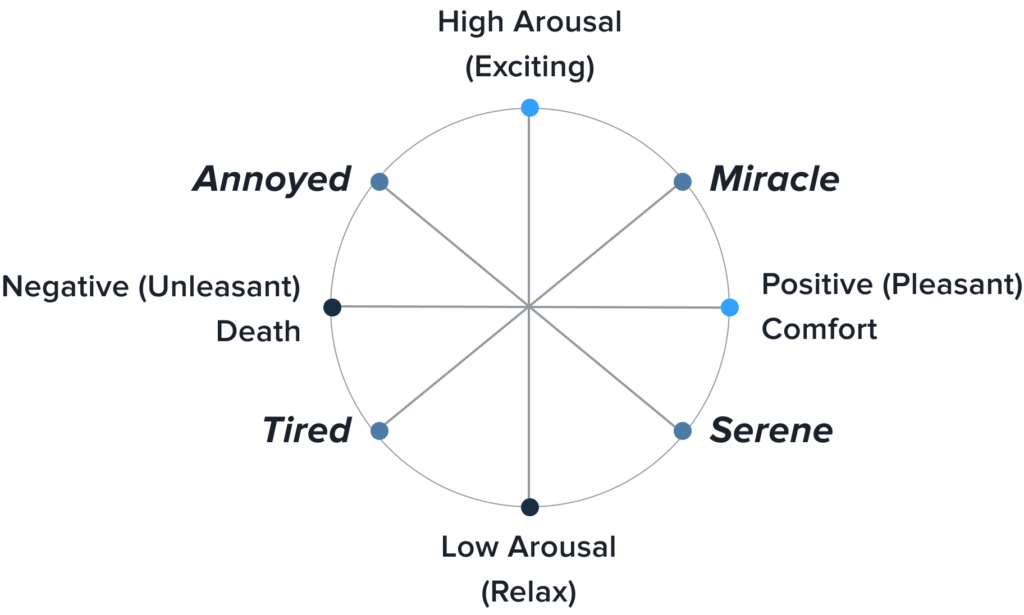
For emotion detection, the most common datasets are SemEval, Stanford sentiment treebank (for using emotional causes or reactions), and ISEAR (in research on feelings and emotions). A popular and relevant dataset is EmoBank. It includes news, blogs, and letters collected in particular from social networks such as Twitter, YouTube, and Facebook. However, such data are unstructured and require additional computation. In the ResearchGate study, the author talks in detail about sentiment analysis and model testing, its tables contain a detailed analysis of emotions and datasets used for emotion detection.
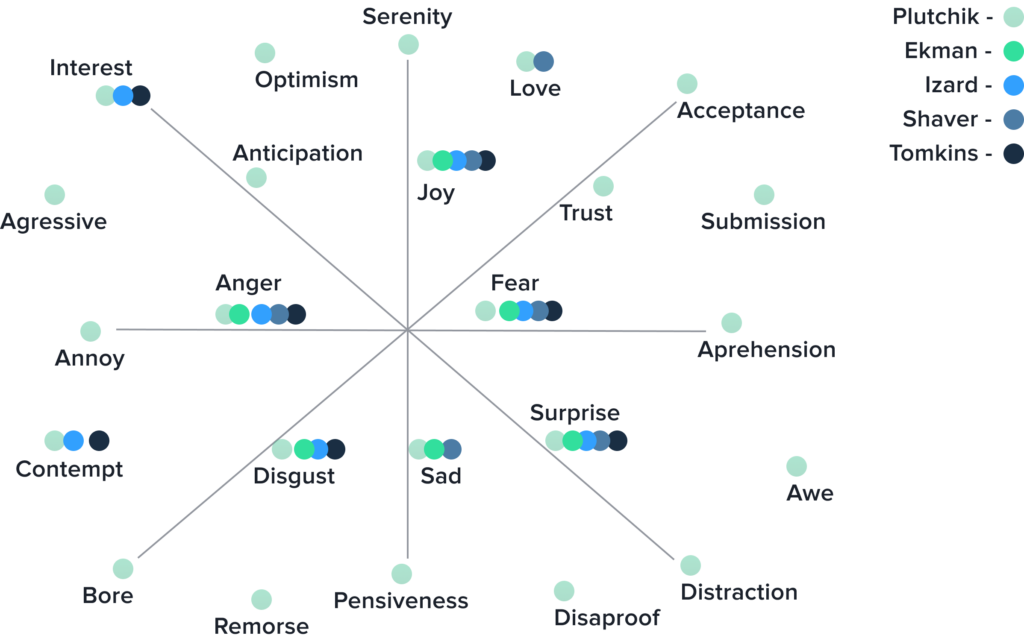
Intent Analysis
Analysis of the consumer’s intentions is no less important than the analysis of their emotions.
Jeff Catlin, founder and CEO of SaaS provider Lexalytics, distinguishes between them in this way: “Take a simple statement like, ‘I’m going to buy a new iPhone.’ In terms of sentiment, it doesn’t have any real tone to it. You can only understand that buying a new phone is good news. However, use the phrase “I saved like crazy for Black Friday. iPhone 14, here I am!” and you will see that although it does not have such keywords as “buy”, or “price” there is an obvious intention to buy an iPhone”
The model will distinguish emotions in this sentence as follows:
- intent = “buy”
- assigned object = “iPhone”
- intended = “I”
How does the analysis of intentions work? The model relies on technologies that analyze grammar, the work which is related to natural language processing. The intent analysis relies on grammar analysis technology, which is part of natural language processing (NLP). Thus, the classifier uses Machine Learning and Natural Language Processing to analyze text and automatically associate words with certain human actions. Most often, such words become “buy”, “buy”, “price”, and everything like that. To work with such a model, you will have to train by creating your own tags and corresponding samples for each tag. The more examples – the more accurate your classifier will work.
Just like said Jeff Catlin: “Intent is kind of a sexual trait, but the grammar analyzer is the key that makes it work, the ability to understand what people are talking about, regardless of the type of content. We built Grammar, a parser for Twitter dealing with bad punctuation, weird capitalization, etc.”
One of the developments in banking sentiment analysis was to develop a model to find out whether its customers intend to stay with their bank or switch to another.
How to Do Customer Sentiment Analysis
Analyzing customer sentiment manually is a long and tedious process that yields inaccurate results. Most companies switched to an automated system a long time ago. Therefore, let’s analyze how sentiment analysis works and how to put it into practice.
Where to Find Information About Customer Searches
In order to effectively implement sentiment analysis in your service, it is worth working with customer reviews, support conversations, micro surveys, live chats, or social media comments. All of this adds up to actionable, but unfiltered data that needs to be prepared for analysis. You should take into account grammatical errors, typos, relevancy, meaning, and other criteria. All this is a long and slow process, which can be automated with the help of various software.
For example, you perform micro-surveys that are responsible for different customer attitude criteria for a complete analysis of your service. You can create Customer Satisfaction Surveys (CSAT), Customer Effort Scores (CES), and Net Promoter Surveys (NPS). Such studies are one of the most popular ways to collect feedback based on artificial intelligence. With the help of NPS, you can get information about customer loyalty to your services. On the usual scale from 1 to 10, you can determine whether your users will be your promoters among their friends or unfriendly users.
Such analytics tools are provided by many sites, in particular, British Airways uses analytics tools SentiSum. Rest assured that this strategy works for Puma, which used sentiment analysis using Talkwalker when launching a new shoe model to better understand the sentiments of its customers.

Top 9 Sentiment Monitoring Tools
Having figured out exactly how you can get an analysis of your customers’ Sentiment and what you need, you can use tools that automate all this work. Different software can collect different data for you, but the functionality of these APIs is truly impressive. Let’s take a closer look at the leaders in the tool that provide quality sentiment analysis.
DiscoverText
If you need to conduct text analytics and extract or filter data that comes to you from various sources, including spreadsheets or letters, the DiscoverText cloud system will do a great job. This add-on uses many methods of text analysis, and text analysis is only one of many.
Hugging Face
The Hugging Face Hub contains the most extensive collection of freely available models and datasets. Thanks to this service, you can immediately start working with sentiment analysis using pre-prepared models. The models are equipped with a Deep Learning architecture, thanks to which they provide high performance for the tasks they need to perform. In addition, you can customize the model yourself to improve sentiment analysis and accuracy according to your use case.
SpaCy
SpaCy is an open-source NLP library and is currently one of the best in sentiment analysis. Developers can build library-based software and process vast amounts of text to understand natural language and extract information. That is why the model developed on the basis of spaCy can collect deep information from a diverse range of sources and conduct sentiment analysis.
Userpilot
Userpilot NPS also includes a set of tools with which you can develop your product and customize surveys using available templates. The tool analyzes all your surveys to form a quick summary, which you can divide according to the categories that are convenient for you.
PyTorch
PyTorch is another open-source library created by the Facebook team based on Artificial Intelligence. It can perform many different functions, including sentiment analysis. This library is extremely simple and easy to use and can work on simplified processors such as CPUs and GPUs. PyTorch has powerful API and natural language tools that will help you train your model and conduct sentiment analysis with ease.
InMoment
This is a platform with a comprehensive approach aimed at optimizing work with the client. The functionality of the program goes beyond text messages because it can analyze voice messages and transform them into a form convenient for you. The platform collects data from numerous sources such as social surveys or reviews, comments on social networks, etc.
IBM Watson Natural Language Understanding
The tool has a set of advanced analysis systems. The service provides information on keywords, categories, relationships between the product and feedback, and entities, and also sorts the text according to the industry and area to which it belongs. At the moment, the program interface has 13 languages and tools for developers with which they can, for example, create chatbots.
Scikit-learn
Scikit-learn is a standalone Python library on Github that runs on machine learning algorithms. Data scientists use it for semantic analysis and NLP-related tasks. A model that learns on the basis of library data can output an evaluation of the text as negative or positive. The library already contains several different classifiers that provide vectors for translation. Spotify uses scikit-learn algorithms in its sentiment analysis.
The Google Cloud Natural Language API
It uses sentiment that it pulls from news, email, social media, and blogs. Its functionality includes obtaining information from documents, audio files, or even documents written in other languages. The program also uses Entity analysis, Entity sentiment analysis, Syntax analysis, and Content classification.
There are many services with different functionality, languages, data, and analysis systems that will provide you with information about the sentiment of your customers. All you need to do is choose the program you will use and start understanding your customers better now.
Why is Customer Sentiment Analysis So Important?
Let’s look at the CX Statistics study, according to which, in the next 5 years, the customer experience will become the priority area of research in 45% of companies. Almost 86% of customers are willing to remain customers of a brand and continue to shop in stores if they received a good customer experience.
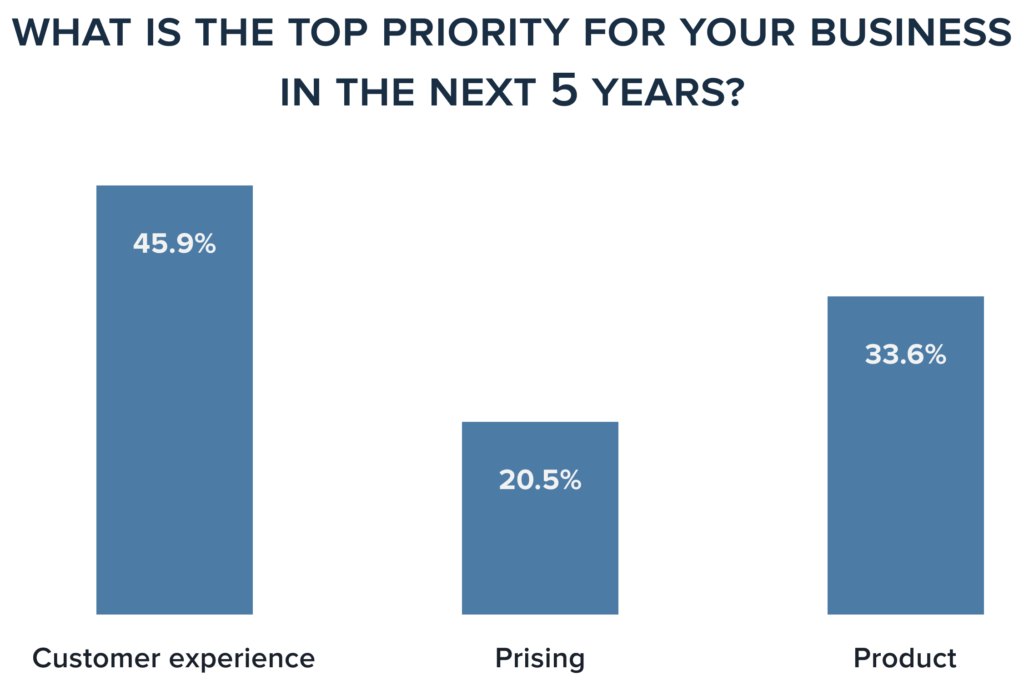
Use Your Advantages and Anticipate Their Implementation
Every client wants to apply for services and receive only a positive experience. That is why it is very important to understand exactly what your client likes, to develop your services in this direction, and to understand where the shortcomings of other services are. Sentiment analysis works precisely for this purpose. It provides information thanks to which you can achieve informational support for your client and prevent the situation from worsening. You will be able to understand the reasons and factors that contribute to negative customer experiences so that you can avoid mistakes in the future.
Create a Comfortable Environment For Your Customers
Your customers want you to understand their moods and help them when difficulties arise. Here, it is important to make quick decisions so that they do not leave negative feedback on your platform or social networks. Sentiment analysis works in such a way that you can predict the reactions of customers and make decisions that satisfy them. At the moment, buyers have access to many communication channels, including both emails and support. All these channels contain a lot of information that needs to be evaluated and processed. Sentiment analysis can work with this data to help you solve the problems your customers face more quickly.
“Listen” to Your Customer
Voice of the customer is a method that uses feedback analysis implemented to improve your product. This is done by a feedback system with the help of machine learning algorithms and artificial intelligence, which together form the Customer Sentiment Analysis. Implemented systems will help identify the number of repeated phrases by implementing text analytics using API. Accordingly, it is aimed at improving turnover, strategy, and services. It is worth conducting VOC analysis regularly in order to understand how and where to eliminate deficiencies.
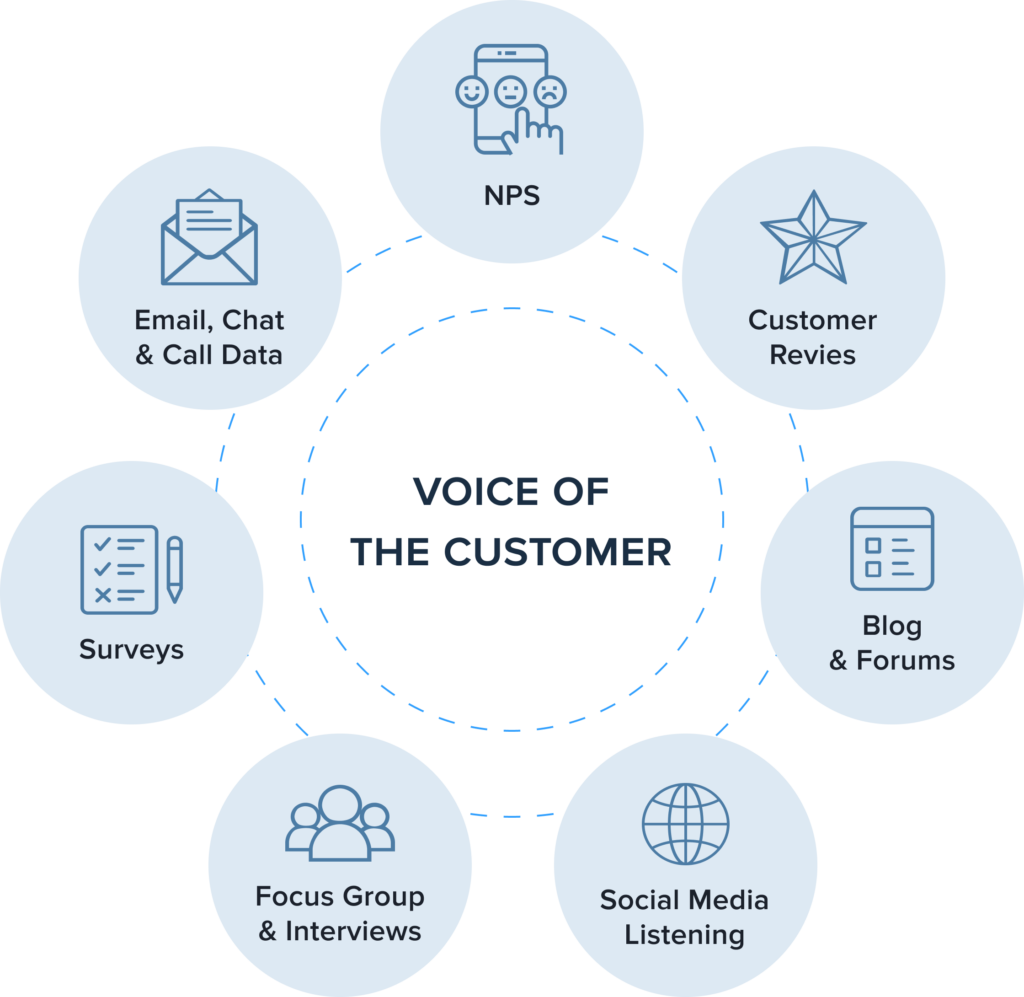
Keep the Customer Loyal To Your Service
A sentiment score works as a signal that something about your service is not satisfying customers. These signals may indicate some service failures, which drives a person back from cooperating with you. Sentiment algorithms can provide you with statistics on the outflow or inflow of your customers.
Promoting Your Services And Increasing Customer Loyalty
For communication services, it is very important to understand the mood of the client and catch all the emotional signals recorded in their comments, requests, or calls. Possessing such information and implementing machine learning algorithms, can increase customer loyalty to your company. After all, it is important for everyone to be heard and understand the personal attention to the service. It can also work great as a way to promote your own brand.
Kevin Hodgkins, vice president of Fivetran, said in an interview: “When customer sentiment scores are high, it directly contributes to improving more traditional service metrics.” Fivetran, using customer sentiment analytics, was able to increase its CSAT (Customer satisfaction) by 5% in just 6 months.
Pay Attention To Each Customer
Personalization plays a significant role in using the service. Clients increasingly want unique interaction from you and attention to their needs, culture, or desires. Gartner released a study, the results of which showed that companies can achieve a commercial result that is 16% greater by using personalized messages than those companies that do not. Accordingly, if you have doubts about whether the result will pay off, then you can be sure of it.
Amazinum Customer Sentiment Analysis: Use Cases
We already understand how sentiment analysis works and figured out why it is needed and how it affects the following service. Now we can consider real use cases that the Amazium company encountered.
In the Retail Sector
- Goal: the ability to analyze the customers’ satisfaction with their purchases and customer support services.
- Solution: The developed model searches for semantic information and pulls it from social networks, news, video content, and comments. After that – analyzes all the information and predicts specific patterns, using semantic clustering. At the same time, it is also based on a number of factors such as the language, age, and location of the user.
- Outcome: Understanding customer behavior and their response to changing trends.
Sentiment Analysis of employee satisfaction
- Goal: to understand how motivated employees are and how it affects their productivity.
- Solution: The software that automates the employee survey process is based on machine learning and sentiment analysis. After that, the Tool can extract information from social networks, questionnaires, or monitoring in real-time, determine the general mood of all responses, and group them by departments, and keywords. Such analysis should be carried out more often, and then the team will compare the current results with the previous ones.
- Outcome: Human resource managers receive information that can later affect the work of the entire company. With the help of software, employees can improve their work environment or say goodbye to an unmotivated specialist.

In the Hotel and Restaurant Business
- Goal: Provide personalized services to clients and be a leader among competitors
- Solution: The tool was created on the basis of semantic analysis and Natural Language Processing technologies. She analyzed all reviews about hotels or restaurants, based on sentiment analysis in the text, and highlighted the semantic aspects of each review. In this way, each hotel was assigned an overall score related to each specific category (cleanliness, location, taste)
- Outcome: For business owners – an overview of disadvantages and advantages, a better understanding of their clients, and, accordingly, an increase in income. For customers – an objective assessment of a hotel or restaurant that will suit you according to all criteria.
How to Develop a Customer Sentiment Analysis Model
In practice, the analysis of superstructures is built using machine learning algorithms and NLP. At the same time, there are different ways of training the model, depending on the result you want to achieve. Therefore, we will analyze several ways of developing sentiment analysis and you can choose the one that suits you the most. A model developed on the basis of machine learning will be able to create patterns from the information you give it and predict the mood of the text.
So, we will talk about the following methods of training the model:
- TextBlob
- BERT
- Automated model
- Dictionary model
- Hybrid model
- Analysis of named entities
- Automated supervised model
TextBlob Model
TextBlob is an open-source library. Commonly, programmers use it to process textual data, mark different parts of speech and identify those parts of speech, translation or sentiment analysis. The model allows you to define which algorithm you want to use under its simple API. So you have two implementations trained on different aspects. PatternAnalyzer stands by default and evaluates sentiment analysis based on patterns found in its library. NaiveBayesAnalyzer is powered by the NLTK library and trained on movie feedback.
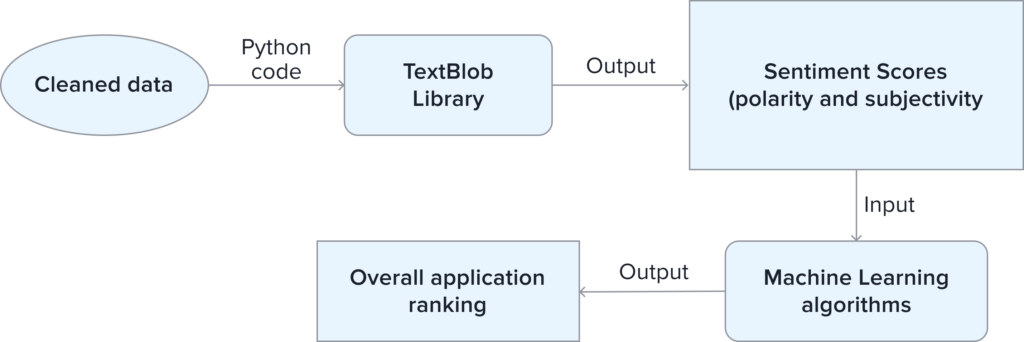
Bidirectional Encoder Representations from Transformers (BERT) Model
BERT is currently the most advanced Machine Learning model used for NLP. It was developed in 2018 and trained on English Wikipedia, which contains 2,500 million words, and BooksCorpus – 800 million words. Due to this, the model has the best accuracy for many tasks included in the field of NLP.
Thus, BERT works according to the previous two options Basic, which includes the architecture of a 12-level neural network with 12 headers, 110 M parameters, and 768 hidden levels.
The large model, accordingly, contains already 24 levels, with 1024 hidden, 16 headers, and 340 MP parameters in the neural network architecture. So, to train the model, you need to go through the following steps:
- Download Transformers Library
- Download the BERT classifier and Tokenizer
- Configure simple parameters and hyperparameters
- Develop forecasts for the future
- Implement the developed result

Source: Erik Storrs
Analysis of Named Entities
It focuses on important words or meanings that indicate the direction of work with the client. Such a model is trained by searching for all entities in the text, using element recognition. Then the model clusters the text by segments PERSON, ORG, and GPE. In this way, you get a model that analyzes the text and shows the mood of the client, the priority of this feedback, and the direction using the definition of its meaning.
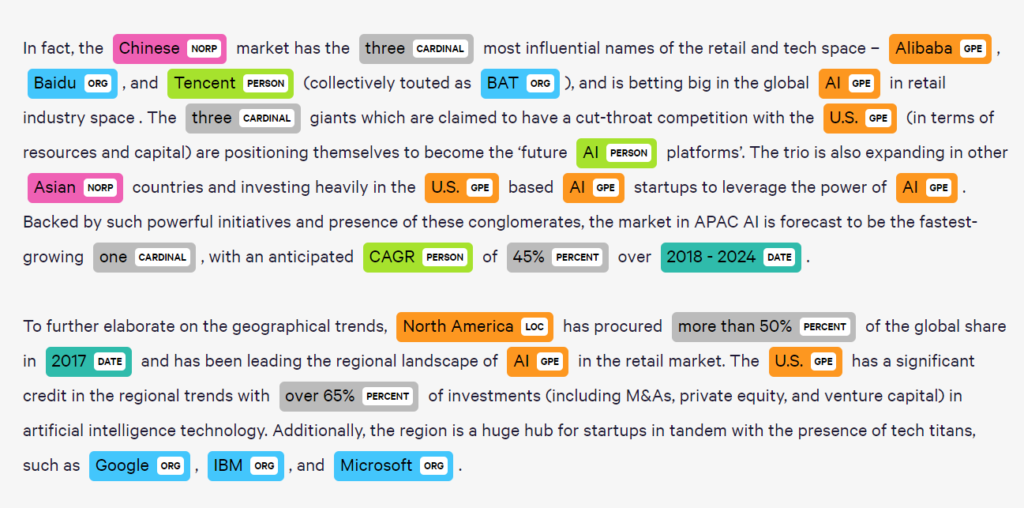
Source: Depends on the definition
Automated Supervised Model
This kind of model works on the basis of machine learning or deep learning algorithms, which use already labeled data sets to classify them and predict the results. Such a set should be output by tags based on the input data. In this way, the model can understand what it needs to focus on among the unseen data.
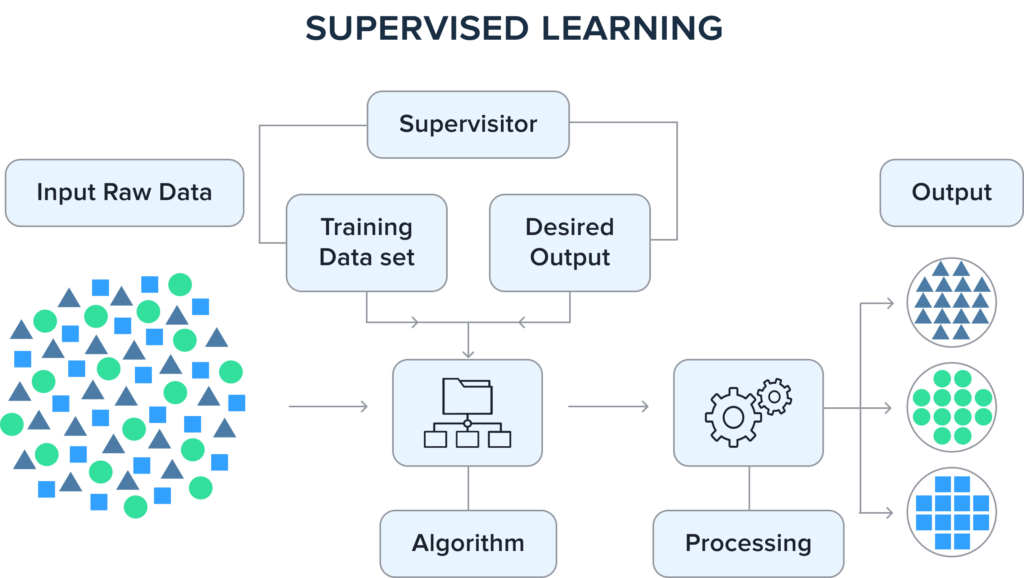
Therefore, the data set you have labeled is key to training the model to produce accurate results. The model will receive different patterns of data in the text and be able to predict sentiments for the text you provide.
Dictionary Model
The dictionary is created based on positive and negative words from the text. Such a method is created using special Python functions and a test case with labels. After that, a dictionary containing n-gram words for positive and negative texts is created. At the same time, the user can add his own words to the dictionary, based on his domain and knowledge about it.

Source: Dataedo
To use this dictionary, you need to create a function that can analyze the text and classify it as positive or negative. The overall score is formed from the number of negative and positive words, so the final score is divided by the number of words in the text so that the score is normalized.
If the assessment of positive mood occurs in the range from 0 to 1, then 1 means 100 percent positive mood. If the assessment of negative mood occurs between numbers from 0 to -1, then -1 means negative mood with 100 percent probability.
Automated Model
Such a model relies only on Machine Learning and Artificial Intelligence algorithms. The created set of text data classified as neutral, negative, or positive is placed in the model for training. The algorithm analyzes and studies the data until it correctly evaluates the unfamiliar text. However, in this method, the set of data with which you train the model is important because it will not be able to work with unfamiliar data. Such an algorithm works better than a semi-automatic one but may contain inaccuracies regarding the classification of the text as negative or positive.

There is also a method that uses both an automatic model and a rule-based model.
Last But Not the Least
Measuring customer sentiment analysis is an important aspect of many areas of business, from retail to healthcare. Machine Learning and Artificial Intelligence algorithms developed by programs and services allow you to easily learn about the customer’s impressions. Routine work automated by machines now gives a much more accurate result.
Conducting such an analysis allows you to better understand your customers, improve your services, and understand weaknesses and advantages. In addition, the prediction of the user’s reaction gives you a considerable advantage over your competitors.
Learn the customer sentiment analysis, attract more users and increase your income.
Do you want to develop a sentiment analysis model for your business? Then write to us!





